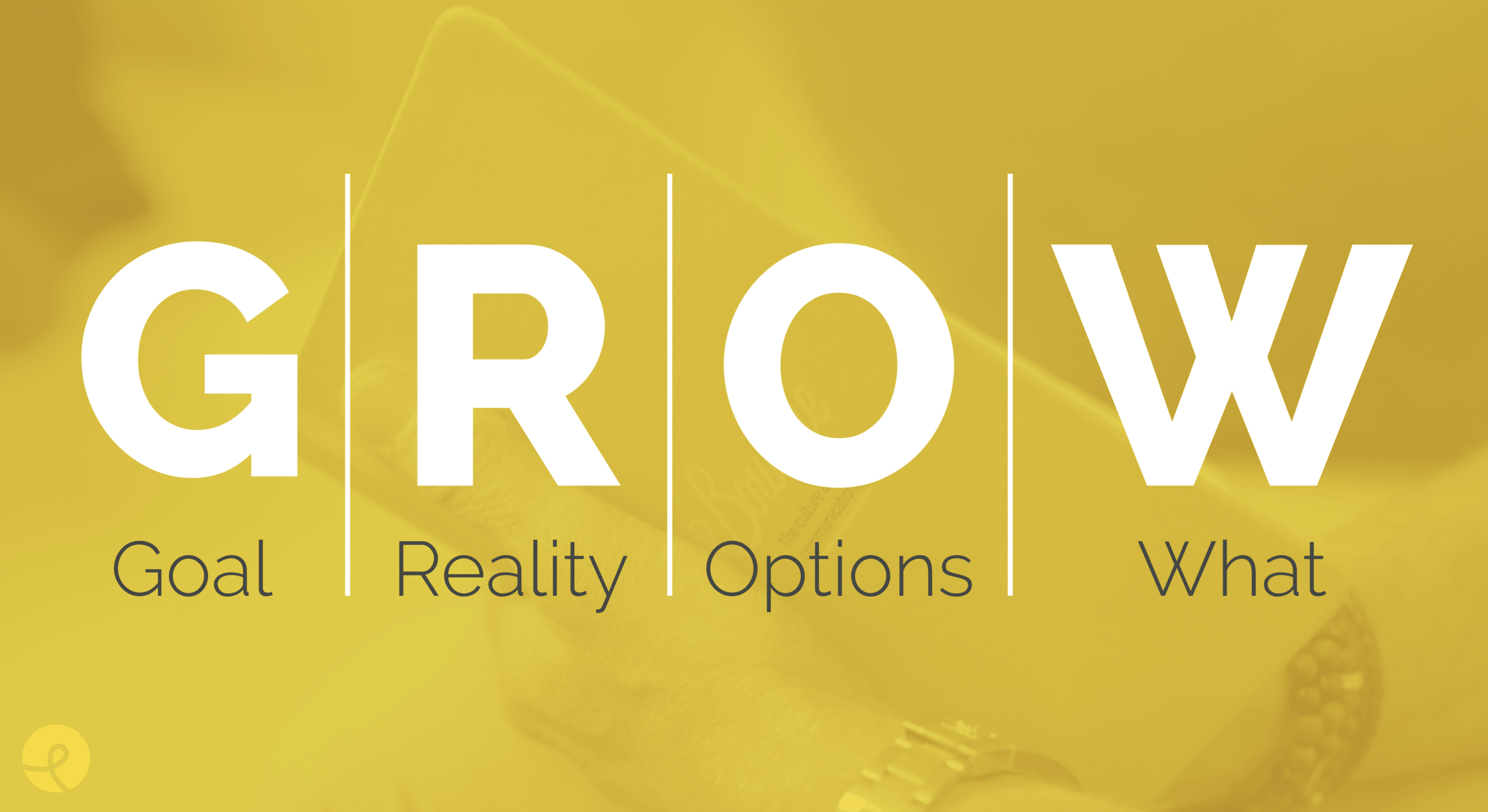


Put simply – the GROW Model provides a structure for a coaching session which, in turn, helps a coach to determine the most effective questions to ask a coachee. The acronym GROW stands for: GOAL / REALITY / OPTIONS and WHAT.
The first step is to establish a clear and specific goal that the coachee wants to achieve. The goal should be challenging yet achievable and should be stated in a way that is measurable and time-bound.
Useful questions for goal setting include:
The next step is to assess the current reality of the coachee, including any obstacles or challenges that might hinder their progress. The coach will help the coachee to explore their current situation and gain a clear understanding of where they are starting from.
Some useful reality questions might include:
Once the goal and reality have been established, the coach will help the coachee to generate a range of options for achieving their goal. This might involve generating ideas, exploring different strategies or approaches, or identifying potential resources that could be used.
Some useful options questions might include:
When? By Whom? And for the Will to do it
At this final coaching phase, we are looking to convert the discussion into a decision. This might involve setting specific milestones, identifying key actions that need to be taken, and establishing a system for monitoring progress and making any necessary adjustments. It is about building an action plan to take the coachee towards the goal. The coachee needs to retain choice and ownership even to the extent of deciding to do nothing.
Some useful “What” questions might include:
We couldn’t find a video example of the GROW model in action that we liked, so we decided to make our own. If you’re planning for a coaching session, feel free to share this amongst your colleagues and if you have any questions about the GROW model or anything else – please don’t hesitate to contact us at hello@wearebowline.com.
By providing a clear structure for coaching sessions, the model not only helps coaches to stay focused but also ensures that their clients or colleagues are making progress towards their goals.